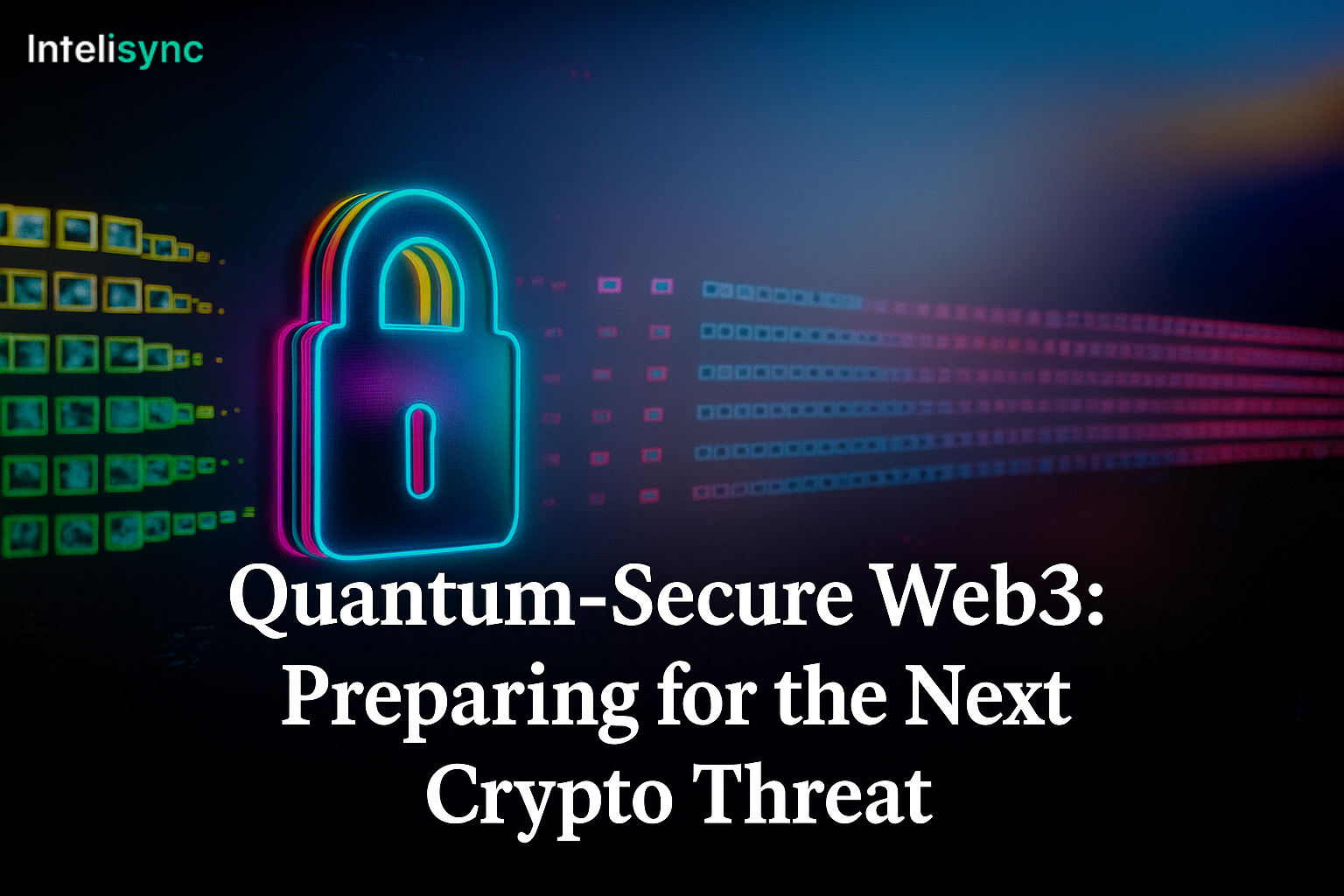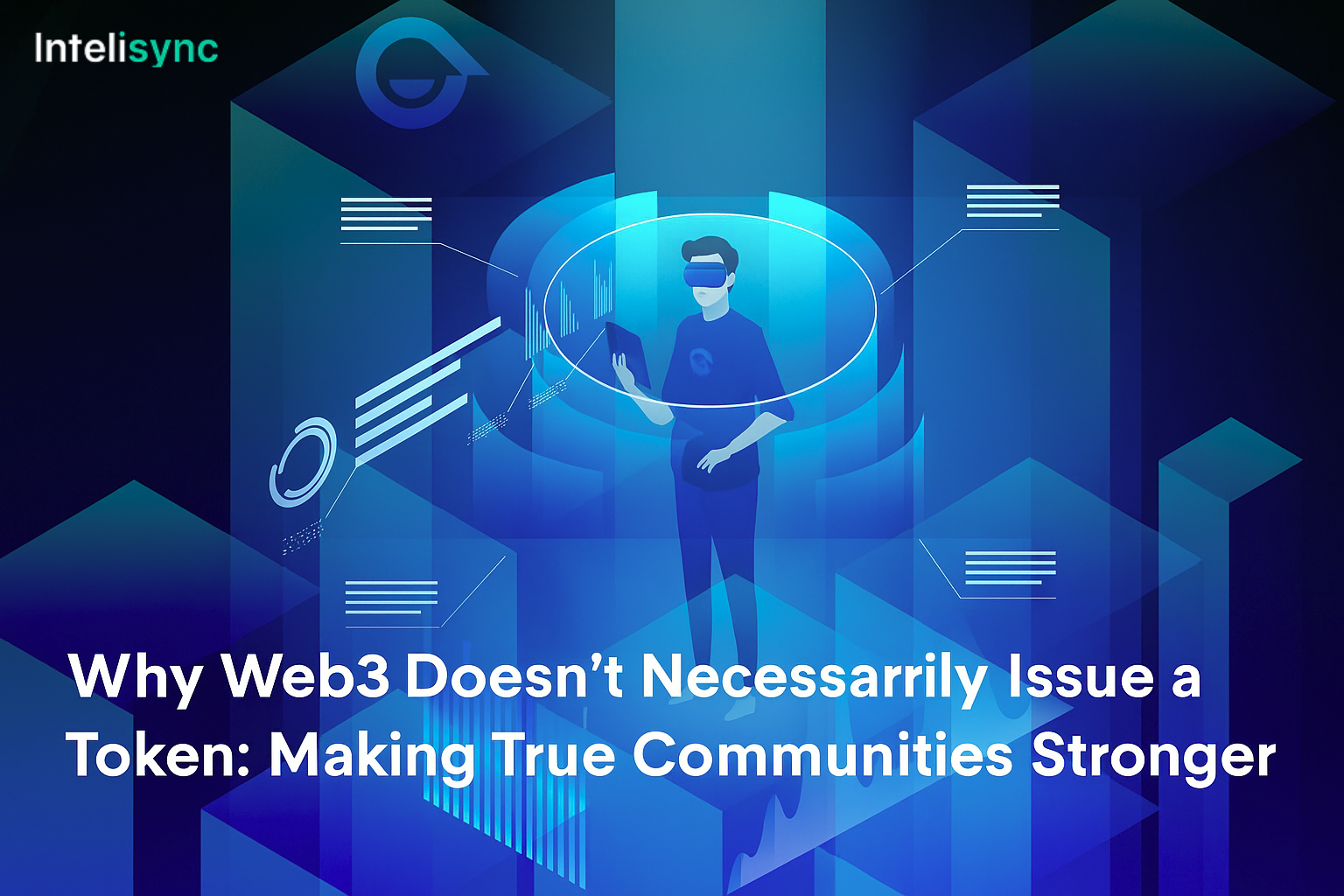Introduction: The Attack Vector of Quantum Computing against Web3
Web3’s premise is based on trustless security, cryptographic method and decentralisation. But the advent of quantum computing has also fueled fears: Would the encryption standards that secure blockchain networks, wallets and transactions be crackable in seconds?
Quantum computing is a game changer in computation, with the ability to perform certain computations exponentially faster than classical computers being a potential existential threat to existing blockchain cryptography. This could compromise the very foundations of trust, immutability and decentralization upon Web3 was built.
In this blog, we endeavour to examine how Web3 can become quantum-secure, the technology being developed and why it is important to be quantum-ready for digital security in its next generation.
Quantum Risk to Web3 Explained
Blockchain’s Reliance on Cryptography
Web3 platforms rely on public-key cryptography (e.g., RSA, ECDSA and elliptic-curve cryptography) extensively. These systems secure:
- Wallet addresses
- Transaction signatures
- Smart contract executio
- Consensus protocols
Classical computers would require billions of years to break these keys, but it might take only minutes for a quantum computer that is powerful enough.
Quantum Algorithms That Break Encryption
- Shor’s Algorithm: Factor huge prime numbers, breaking RSA and ECC.
- Grover’s Algorithm: Accelerates brute force attacks, reducing hash/symmetric encryption such as AES.
That means that, if Web3 does not shift to post-quantum cryptography (PQC), every blockchain could potentially be vulnerable on fronts such as wallet theft, transaction forging and smart contracts hacking.
The Race Toward Quantum-Secure Web3
Post-Quantum Cryptography (PQC)
Post-Quantum Cryptography (PQC) is the class of cryptographic algorithms that are designed to be secure against quantum attacks. New technology and standards Very soon (February 2020) NIST / National Institute of Standards and Technology will finalize the selection of quantum resistant cryptographic algorithms. Candidates such as CRYSTALS-Kyber and Dilithium are one of such algorithms.
For Web3, PQC adoption means:
- Quantum-secure wallets
- Upgraded consensus algorithms
- Secure cross-chain bridges
Zero-Knowledge Proofs (ZKPs)
Surprisingly, zk-proofs are already used in scaling (zk-Rollups) and furthermore offer strong cryptographic guarantees against quantum threats. Uncovering of Sensitive Keys and Data – By eliminating the exposure of sensitive keys and data, ZKPs decrease potential points for attack.
Hybrid Cryptography
One immediate potential solution is hybrid cryptography, that is the combination of classical algorithms and post-quantum in a hybrid mode for full backward compatibility allowing to achieve an upgrade on some features.
Quantum-Resistant Consensus Mechanisms
Current models of consensus (PoW & PoS) rely on insecure cryptographic primitives. Emerging approaches include:
- Proof of Quantum-Resistant Work (PoQRW) – implemented using post quantum hash functions.
- Post-Quantum PoS – validators consume PQC signatures.
- PQC Multisig – multi-party claiming signatures where the co-signers all need different quantum secure keys to sign.
The Transition to Quantum and Web3 (beta) wallets
Wallets represent the closest thing to a danger point. Quantum-secure wallets will feature:
- Lattice-based cryptography for key generation.
- Forward-Secure Key Rotation to Reduce the Risk of Historical Attack.
- Integration of hardware that is quantum-secure in hardware wallets.
Firms such as Intelisync are investigating wallet infrastructures incorporating PQC, to allow for a transparent transition on the user side (without changing UX).
Cross-Chain Interoperability in a Quantum-Secure World
One neglected area is that of cross-chain bridges. Bridges are very rich in liquidity, so they make a good target value-wise for quantum hackers. Quantum-safe signatures and interoperability protocols based on ZKPs and BLS’12 or similar will also be needed.
Projects building bridges must:
- Adopt threshold post-quantum signatures
- Use quantum-secure communication channels.
- Incorporate AI-based on-chain tracking for anomalies.
Quantum-Security Web3 Use Cases in Practice
Decentralized Finance (DeFi
Billions of dollars in value are being managed by DeFi smart contracts, all of which will have to upgrade to PQC or continue running risk of quantum-fueled exploits.
Supply Chain and Real World Assets (RWA)
Quantum-safe signatures secure the authenticity of tokenized assets and safeguard false identity proofs.
Digital Identity in Web3
Decentralized, quantum-secure digital identities (self-sovereign identity or SSI) will be a key requirement for Web3 to go mainstream. In the absence of PQC, quantum adversaries could clone digital IDs.
Intelisync’s Role in Quantum-Secure Web3
At Intelisync. ai, we are ushering businesses and Web3 projects into the post-quantum era by:
- Integration of post-quantum crypto in dApps, wallets, and blockchains.
- Scaling and securing consensus protocols through PQC.
- Creating quantum-aware cross-chain ecosystems interoperability protocols.
- Facilitating easy migration strategies where Web3 users will not be interrupted.
Futureproofing Web3 infrastructures, Intelisync makes sure that projects are secure and scalable in the face of quantum disruption.
Challenges in Adopting Quantum-Secure Solutions
Scalability vs. Security Trade-Offs
The key sizes of post-quantum algorithms can be larger, and they may require more computation leading to potential performance considerations.
User Adoption and Migration
You’re going to have millions of Web3 wallets out there that need to be migrated over to PQC without breaking UX this will require design and hybrid solutions.
Standardization and Regulation
Projects are at the risk of betting on algorithms to be deprecated before NIST finalize PQC standards.
Roadmap for Building Quantum-Secure Web3
- Examine current quantum insecure protocols.
- Use hybrid cryptography for wallets and the bridge.
- Implement post-quantum consensus in testnets.
- Combine ZKPs with PQC to get privacy + security.
- Work with vendors such as Intelisync in planning migrations.
Conclusion: Web3 Must Be Quantum-Ready
Quantum computing is not science fiction — it’s progressing very quickly. Quantum attacks may be real within a decade, and they would threaten everything Web3 has built.
The initiatives that start early and implement quantum-secure solutions, will protect not only their own systems but the whole decentralized world-order.
Intelisync is leading this transition, and assisting Web3 projects to future proof against the next technology revolution.






